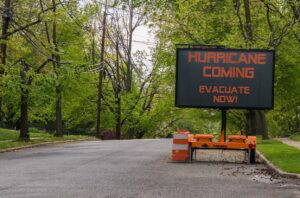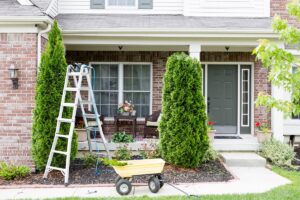“Every man for himself!” is the battle cry of one of our VP’s sisters when it comes to bees.
If you’ve ever been stung by a bee, you know it can hurt, and it can be deadly for those with a bee allergy. Bees (and wasps) can also harm your house and bring unwanted pests. Couple that with the infamous “murder hornets” and these buzzing insects may not be your favorite guests.
So, what do you need to know about bees, wasps, and your home? We reached out to Ian Williams, a technical services manager for Orkin Pest Control. Ian has been in the pest control industry since 2009 and shared important bee and wasp safety tips, so you and your loved ones can avoid these stinging insects at home!
Tip #1 – Know where the bees live, work, and play
There are thousands of species of bees native to the US, but the majority of homeowners see and interact with honeybees, bumblebees, and carpenter bees.
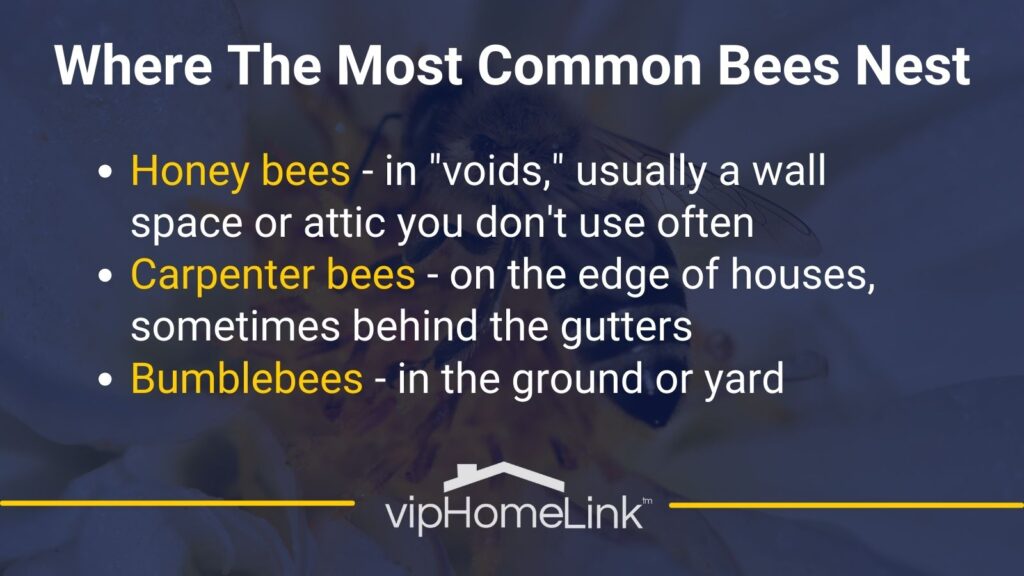
Tip #2- Respect the bees
According to Ian, most of the bees we interact with here in the US aren’t a menace. Yes, they can sting, and that can be a real danger for a family member with a bee allergy. However, for a healthy adult who doesn’t have an allergy, stings don’t present a large threat.
One of the best bee safety tips is simply to “respect” them.
“We want to keep our distance from bees and wasps,” says Ian, “If we’re just out in the yard and there’s flowers and there’s bees around, they’re happy, we’re happy. Unless you threaten them or accidentally squish or step on them, they’re not there to bother you.”
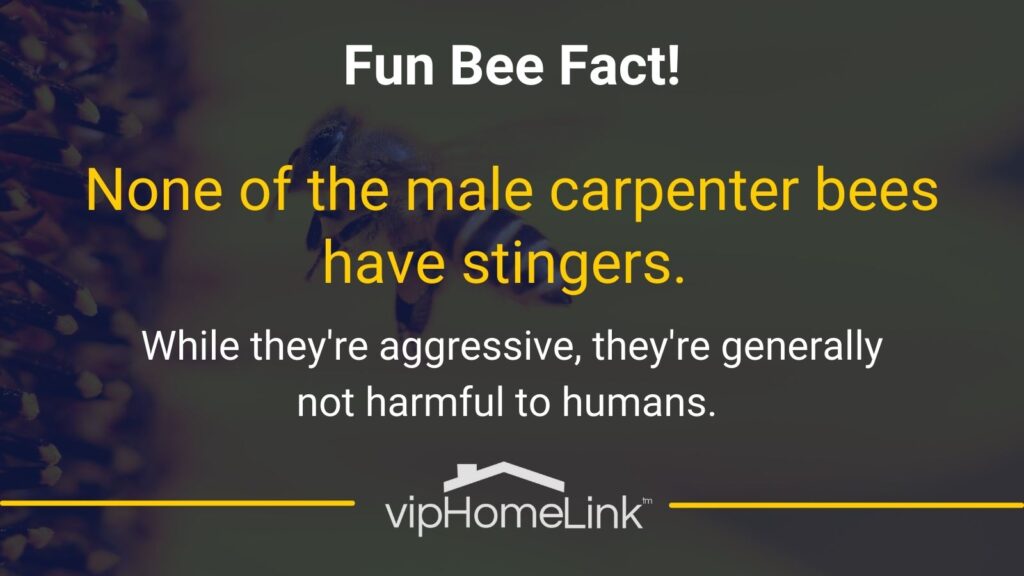
Tip #3 – Prevent woodpeckers from attacking your home
Carpenter bees can cause damage to your home.
“They burrow little holes in wood and wooden structures,” says Ian. “That’s where they put excrement and pollen bits. These holes can be on the side of your home, underneath your deck or in the wood holding up your child’s swing set.”
While this can damage paint and wooden areas of your home, the real issue is if a woodpecker discovers the carpenter bees.
“Some of the larger woodpeckers, especially, can do pretty significant damage in their attempt to get to the carpenter bees and their larva,” says Ian. “Honeybees, too, can become a nuisance when they nest inside a wall.”
Tip #4 – Seal up your home
“We’ve had to remove honeybee nests with a couple hundred pounds of nesting material and honey that’s been building up inside of a wall,” says Ian.
The problem isn’t necessarily when the bees are living in the home as they’re maintaining the beehive. The area becomes an issue once the bee colony leaves.
“As the nest degrades, the honey will start to ferment,” says Ian. “You’re going to be attracting a lot of other pests with that, and you can potentially start to see mold issues.”
Once you remove a honeybee colony from inside your home, you need to address the entrance to the space and make sure they don’t try to return.
While this is one of the best bee safety tips, it’s also great for all homeowners to follow! Before winter, you may have applied sealants to your windows and doors or old mortar on brick. As parts of the country undergo a freeze-thaw cycle, some sealants degrade leaving behind open spaces perfect for bee nests. So, it’s important to reseal those holes and complete necessary exterior maintenance to deter bees from your house.
“All the things that homeowners say, ‘I’ll get to it eventually,’” says Ian. “Those are things that’ll make a direct impact on whether bees decide to show up.”
Tip #5: Call a professional if you have “killer bees”
“When we talk about killer bees, we’re talking about an Africanized honey bee,” says Ian, who explains that they’re a hybrid subspecies of the European honeybee created and accidentally released in Brazil in the 1950s. Unfortunately, they eventually made their way into North American and the southern region of the US.
“Africanized honeybees are defensive bees,” says Ian. “If you’re a homeowner in an area that has established Africanized honeybees, you want to be really careful.”
If you don’t know what type of bee you have, call a professional like an Orkin technician who can devise a pest management plan for your home.
Tip #6 – Be mindful but not terrified of the so-called “murder hornet”
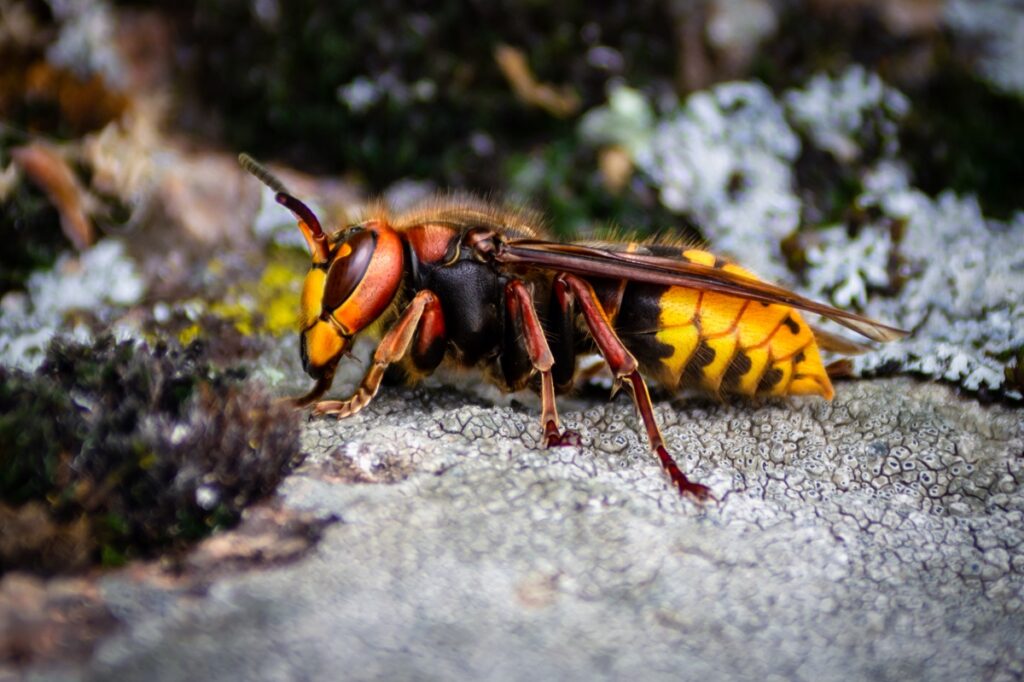
Murder hornets in the US have only been seen in Washington state, and they’re actually Asian giant hornets, which were introduced accidentally from Japan. While it’s important to be aware of them, Ian recommends staying calm.
“I wouldn’t be terrified of them,” says Ian. “They do have a more potent sting than the hornets we have here, but again, a healthy adult without an allergy is probably not going to have an issue.”
It’s important to note that state and federal officials are trying very hard to eradicate Asian giant hornets since they can be dangerous to honeybees.
“The Asian giant hornet actually goes after honeybees and will attack them,” explains Ian. “They will decimate a honeybee hive, scavenge the young, and eat the honey.” This is a real problem for hobbyists and commercial beekeepers alike.
Tip #7 – Like to barbecue frequently or house parties? Call a professional
If you have a good party going on, bees and wasps might show up! Bees are plant feeders that seek out nectar, which means they’re attracted to sugary substances, such as sweet drinks. Yellowjackets are protein feeders, meaning they love a good barbecue.
“You throw hot dogs or hamburgers on the grill and the yellowjackets are there,” says Ian.
Yellowjackets can be difficult to tackle late in the season due to their large nests. That’s why it’s important to call a professional.
“Have them do an assessment of your entire yard and property to make sure they don’t see something you’ve missed,” says Ian.
If you end up using commercially available traps to prevent bees and wasps from crashing your party, make sure you place them away from your entertaining spaces to draw the pests away from your home.
“If I’ve got an area where I want a grill and have a patio, I’m going to put the jacket trap on the other end of the yard to try and draw them to that.”
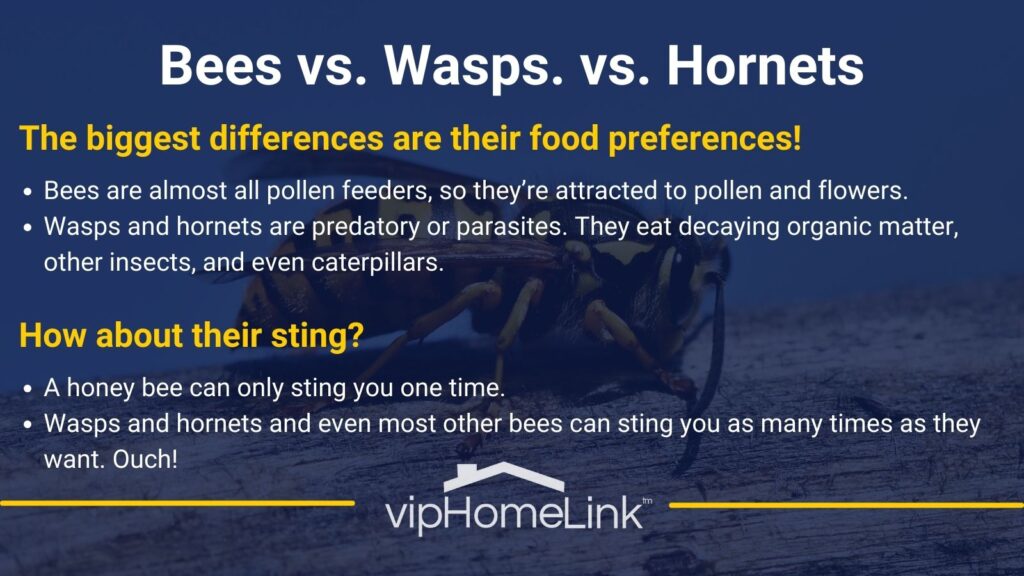
Tip #8 – If you do get stung, get out of there
When you’re stung, the bee or wasp tags you with a pheromone that says you’re a threat to the nest.
“You need to leave that area immediately,” says Ian. “I’m sure all too many homeowners know the sting of having dealt with these before, so just be careful out there.”
Tip #9 – Don’t hate on the bees
“The vast majority of the thousands of species of bees and wasps that we deal with, or that exist in the US, are beneficial,” says Ian. “They’re really amazing pollinators and on the wasp side, do a really great job of going after a lot of other pest insect species.”
When to get rid of a bee or wasp problem
Even when talking about aggressive killer bees and yellowjackets, they’re only an issue when they’re right around your house. Professionals like Orkin can help you figure out the best way to handle your stinging insect issue and if need be, help remove the bees or wasps.
“A bald-faced hornet nest in a tree 60 feet off the ground in your backyard is different than on the eave of your house, and handling those is different,” says Ian.
Orkin has the right tools and equipment to handle beehives and nests, and even helps to prevent an issue from happening again. This requires removing any of the nesting material, cleaning the area to eliminate the scents and pheromones, and inspecting the exterior to find where to seal.
“At Orkin, we know each situation is unique. Looking for a custom solution to keep our customers safe, to keep our customers’ property intact – that’s really what we’re all about,” says Ian.

